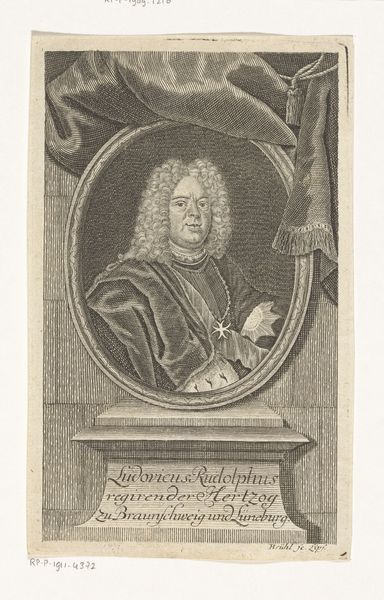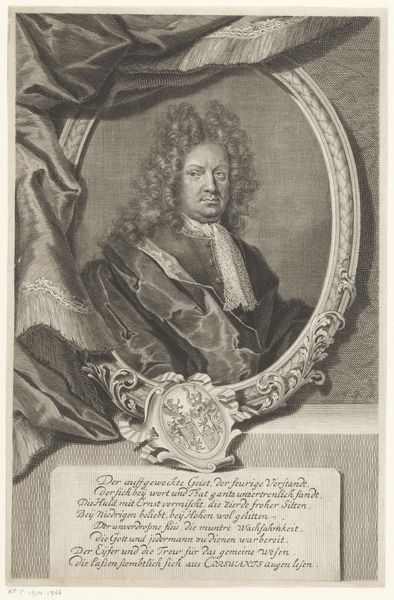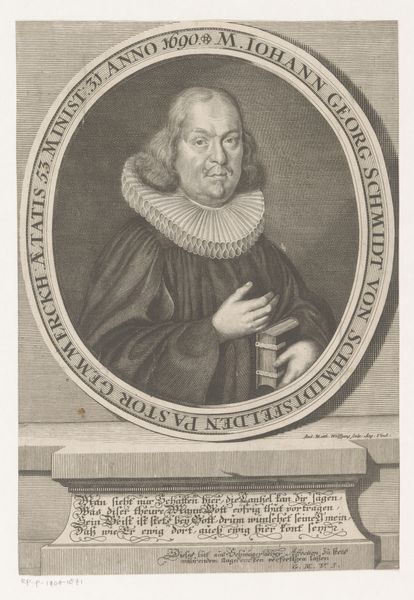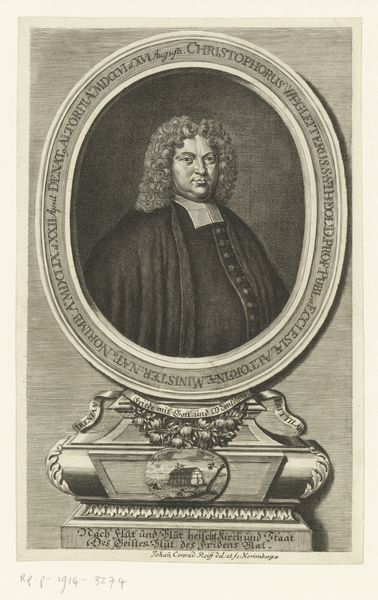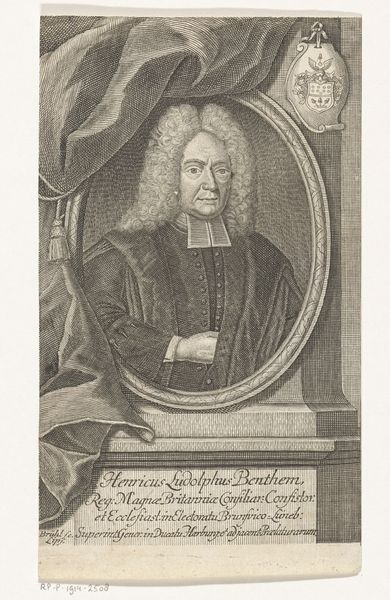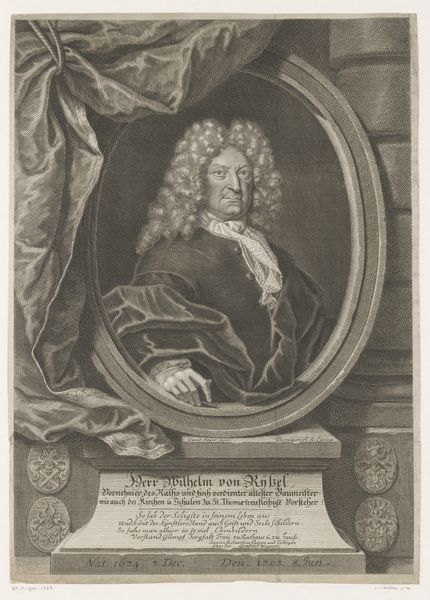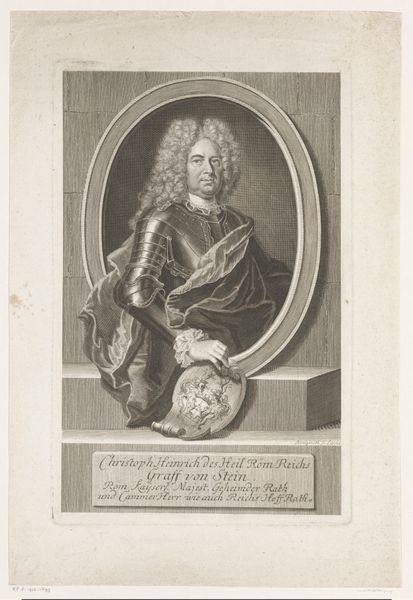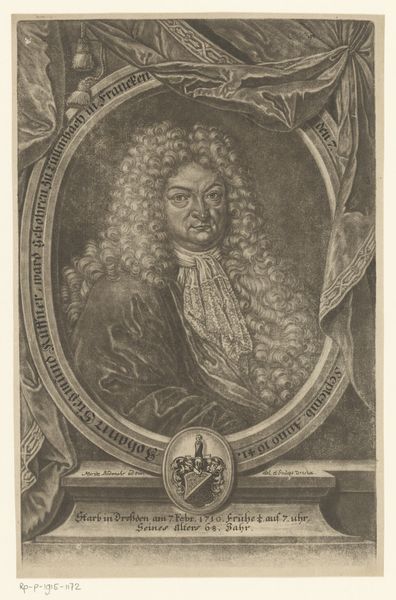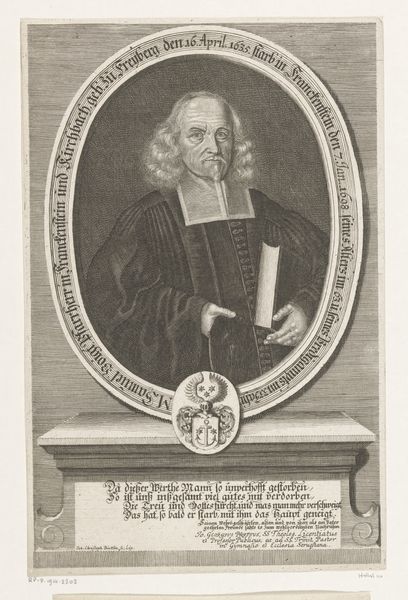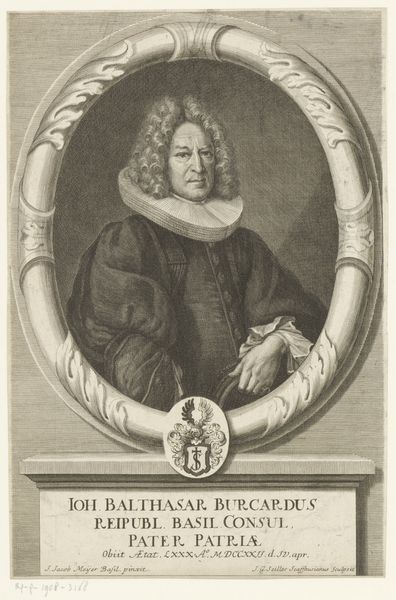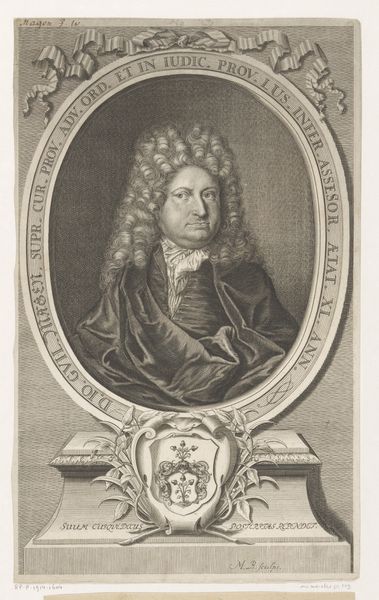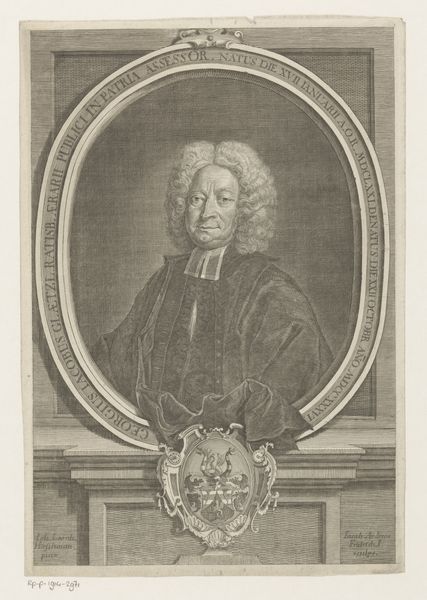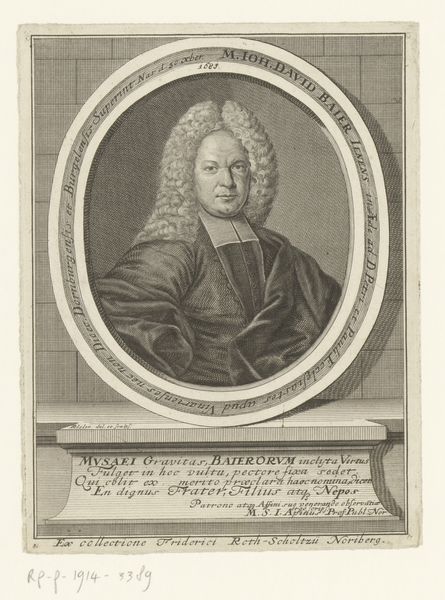
engraving
#
portrait
#
baroque
#
old engraving style
#
archive photography
#
historical photography
#
portrait reference
#
vanitas
#
history-painting
#
engraving
Dimensions: height 305 mm, width 204 mm
Copyright: Rijks Museum: Open Domain
This is Andreas Matthäus Wolfgang's portrait of Reinhard Hedinger, made as an engraving. Here, Hedinger is depicted as a man of faith, intellect, and status during the late 17th and early 18th centuries. During this period, portraits were tools for conveying social standing. Hedinger was a doctor of Holy Scripture, and court preacher, highlighting the intertwined nature of religious and political power. The portrait includes symbols like the skull, a traditional memento mori reminding viewers of mortality. In contrast, the crucifix beside Hedinger alludes to salvation and the eternal life promised through Christian faith. The inscription on the scroll reads "Sterben ist mein Gewinn", meaning "to die is my gain". These elements create a tension between earthly existence and spiritual promise. The image operates within the traditional representations of power, while it also provides a window into the personal beliefs and values of its subject. Hedinger's emotional depth is suggested through the introspective composition of the piece. It shapes a narrative about faith, knowledge, and the human condition during a transformative era in European history.
Comments
No comments
Be the first to comment and join the conversation on the ultimate creative platform.

